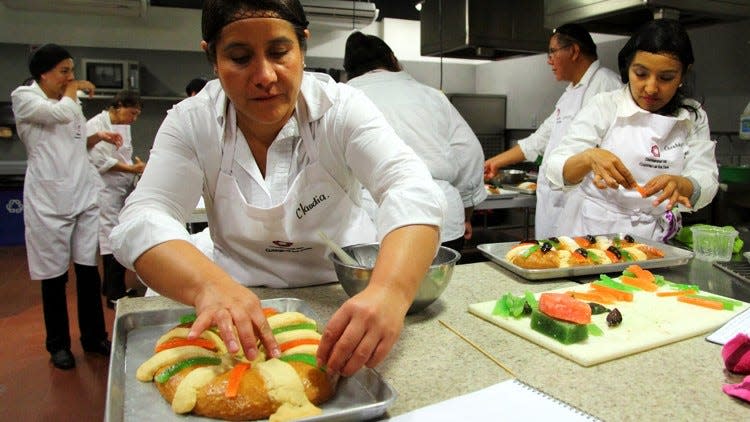Here's the history and traditions of Día de los Reyes Magos, or Three Kings Day
- Oops!Something went wrong.Please try again later.
Editor's note: This article was updated to show that Jesus was born in Bethlehem, according to most liturgical tradition. A previous version of this article misstated where Jesus was said to be born.
The end of the Christmas season will bring another day of celebration for many Austin residents.
Jan. 6 marks Día de los Reyes Magos, or Three Kings Day, a celebration that arrives in conjunction with the Christian holiday of the Epiphany. It is a popular celebration of the Nativity story widely observed in Spain and different parts of Latin America. Some of the Latin American traditions have influenced the celebration of the holiday in the United States.
"It is not a liturgical celebration; it's one of familial and lay significance," Sister Lucero Espitia, an Austin-based nun in the Catholic Disciples of Lord Jesus Christ order, said in Spanish.
Is Día de los Reyes a celebration of the Epiphany?
Not exactly.
Both terms refer to Christian Nativity story. In it, three “kings” — also referred to as wise men or magi — arrive to Jesus’ birthplace in Bethlehem. Their arrival marks the first “manifestation” of the messiah to Gentiles, or non-Jewish people, a significant moment of universality in the evangelical narrative.
This is celebrated as the Epiphany in the Roman Catholic and other Western church traditions, like Anglicanism and Lutheranism. The religious holiday is commemorated on different days by different churches. In the Roman Catholic Church, for example, it is the second Sunday after Christmas. It is a day of obligation, or a day where church members are expected to attend Mass.
Día de los Reyes is a lay festival based on this scene of the Nativity story, but with traditions that are not directly dictated by the Roman Catholic Church. It always falls on Jan. 6.

What are the traditions?
In Mexico, the tradition often includes a Rosca de Reyes. The circular sweet cake is adorned in sugar crusts and fruit candies. The cake can be sliced horizontally in half and filled with milk or chocolate creams. Popular tradition says the bread’s form and decoration represent a jeweled crown.
Many of the Mexican traditions are most celebrated in that country's capital and central regions, according to Espitia.
Tiny plastic molds of the baby Jesus are also commonly baked into the rosca. Traditionally, those who find the figurine in their slice are expected to partake in some portion of the Día de Candelaria traditions on Feb. 2, such as hosting, preparing foods like tamales or taking the figurine to Mass, according to ACI Prensa, a Spanish-language news arm of the Roman Catholic Church.
Gift-giving also comes with the holiday, either through exchange or from the tradition of leaving gifts at the shoes of children.
In Puerto Rico, Charlotte López Díaz grew up in a household where her family left out wine and grapes for the kings on the night before. They also collected grass and left it in a shoe box, as food for the kings' camels.
"What my mom would do is scatter the grass everywhere so it looks like they came," said López Díaz, now a staff member at the Puerto Rican Cultural Center in Austin.
How will it be celebrated in Austin?
The tradition of roscas is continued in Austin within the city's Mexican and Mexican American populations, and they can be found at several bakeries.
Francisco Flores, the owner of La Reyna bakery, said that his small shop expects to sell about 200 roscas this year. For all of the area's Mexican bakeries, the day marks an important final surge of Christmastime sales, he said.
The son of a baker in the Mexican state of Guanajuato, Flores said he has seen roscas steadily grow in popularity since he first moved to Austin about 15 years ago. The cream- and jelly-filled variations especially have become more common.
The Puerto Rican Cultural Center will host a music and dance performance on Jan. 21 to mark the holiday that will include a gift giveaway by the three kings.
Where to buy a Rosca de Reyes: Five Austin Bakeries that will sell them
This article originally appeared on Austin American-Statesman: Why do we celebrate Día de los Reyes, a look at history and traditions?

